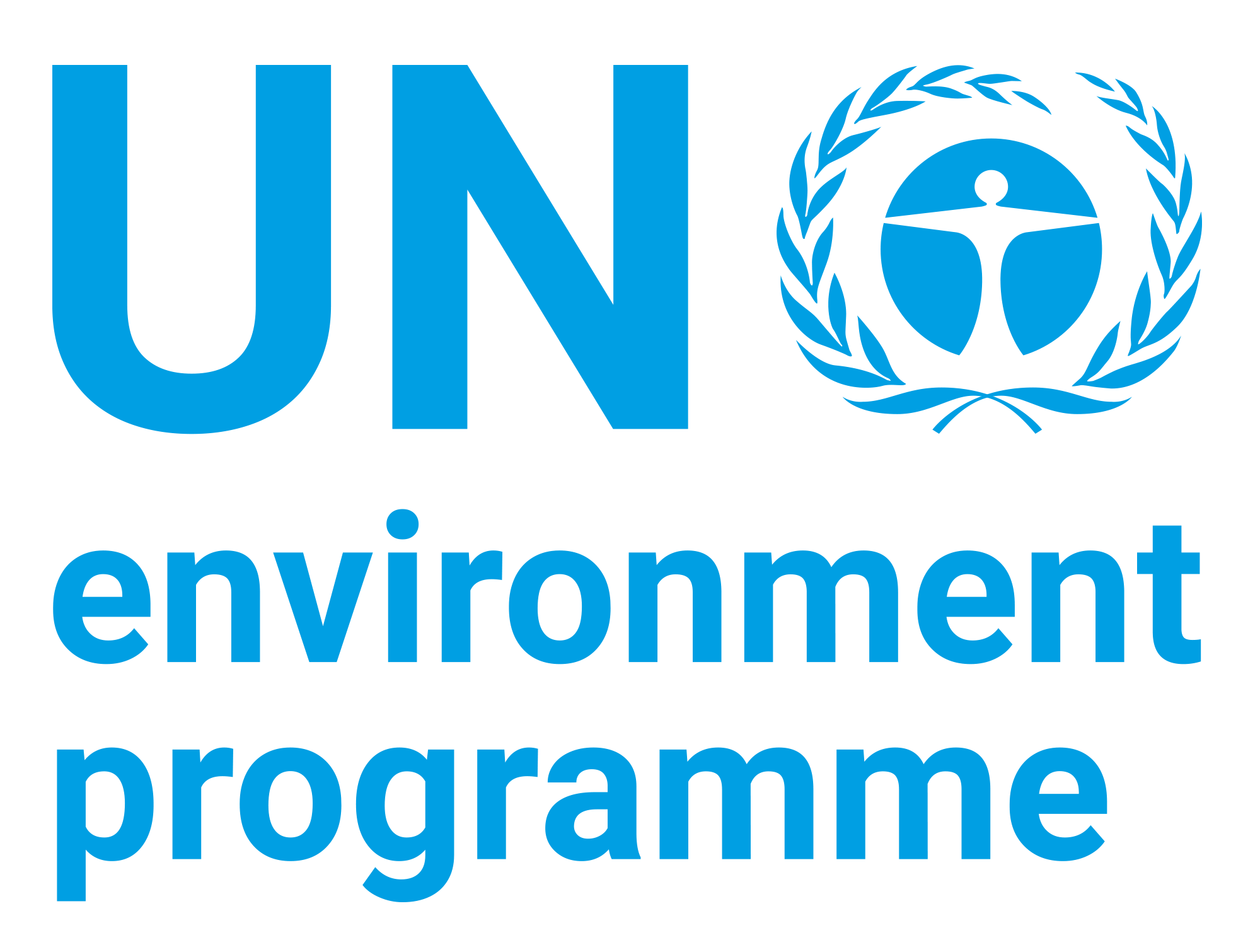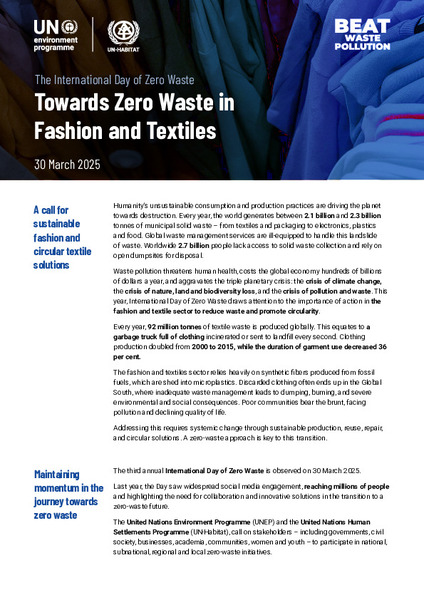| dc.contributor | Communications Division | en_US |
| dc.contributor.author | United Nations Environment Programme | en_US |
| dc.coverage.spatial | Global | en_US |
| dc.date.accessioned | 2025-02-04T05:58:11Z | |
| dc.date.available | 2025-02-04T05:58:11Z | |
| dc.date.issued | 2025-02-01 | |
| dc.date.submitted | 2025-02-01 | |
| dc.identifier.uri | https://wedocs.unep.org/20.500.11822/46998 | |
| dc.description | Humanity’s unsustainable consumption and production practices are driving the planet towards destruction. Every year, the world generates between 2.1 billion and 2.3 billion tonnes of municipal solid waste – from textiles and packaging to electronics, plastics
and food. Global waste management services are ill-equipped to handle this landslide of waste. Worldwide 2.7 billion people lack access to solid waste collection and rely on open dumpsites for disposal. Waste pollution threatens human health, costs the global economy hundreds of billions of dollars a year, and aggravates the triple planetary crisis: the crisis of climate change, the crisis of nature, land and biodiversity loss, and the crisis of pollution and waste. This year, International Day of Zero Waste draws attention to the importance of action in the fashion and textile sector to reduce waste and promote circularity. | en_US |
| dc.format | pdf | en_US |
| dc.language | English | en_US |
| dc.subject | textile | en_US |
| dc.subject | waste | en_US |
| dc.subject | fashion | en_US |
| dc.title | The International Day of Zero Waste: Towards Zero Waste in Fashion and Textiles | en_US |
| dc.type | Briefs, Summaries, Policies and Strategies | en_US |
| wd.identifier.sdg | SDG 11 - Sustainable Cities and Communities | en_US |
| wd.topics | Nature Action | en_US |
| wd.identifier.pagesnumber | 2 p. | en_US |


